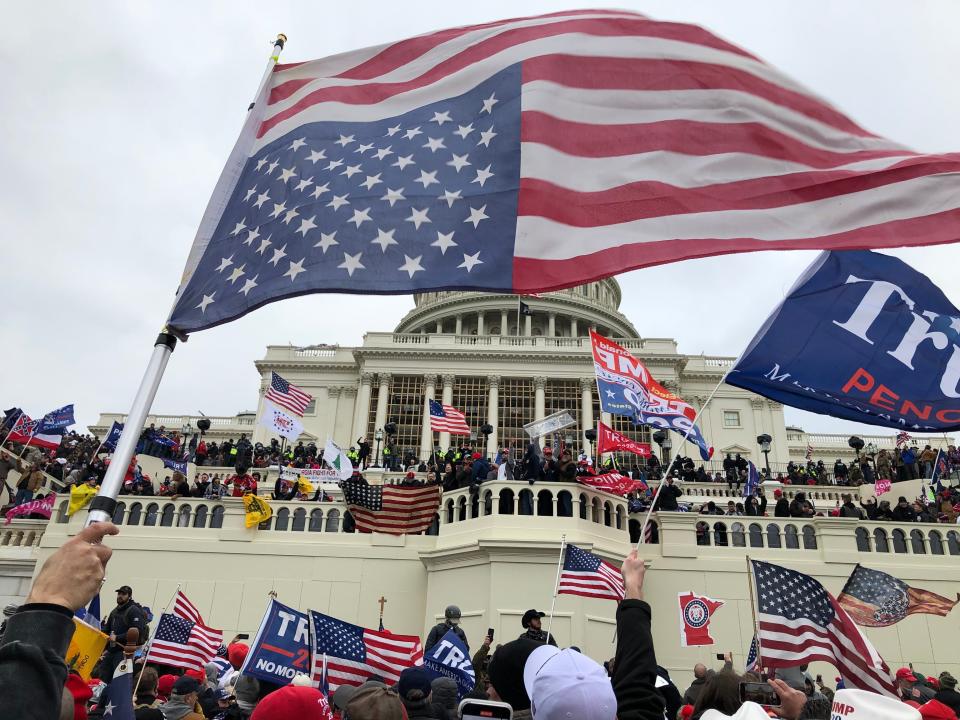(Bloomberg) — Indian Prime Minister Narendra Modi’s ambitious economic growth goals are at risk after his party failed to win majority support in the elections, making him more reliant on a coalition government to push through tough economic reforms.
Most Read from Bloomberg
Modi’s Bharatiya Janata Party didn’t win enough seats in the parliament to meet the 272 majority needed to form a government on its own. It will now be forced to work with its allies to wield power. The results Tuesday were a surprise after exit polls had predicted an expanded majority for the BJP-led coalition.
While a BJP-led government will likely still be able to pursue its broadly business friendly approach to policy, a weakened mandate means it may not have the political capital to enact difficult reforms — especially around labor and land rules, which economists say are necessary to keep growth going.
The election outcome may also tilt the BJP toward more populist spending measures to shore up support, risking efforts to narrow the budget deficit.
“We think fiscal consolidation will still be a key focus, but there could be a possibility of using the recent additional revenue for spending rather than reducing the deficit,” said Shreya Sodhani, economist at Barclays Plc.
Modi’s government had taken decisive steps over the years to rein in the fiscal deficit, bringing it down to 5.6% of gross domestic product in the fiscal year ended in March from a high of 9.2% during the pandemic in 2020. The government had pledged to lower it even further to 4.5% by 2025-26.
India’s ability to curb the deficit and government debt will affects its credit ratings, which are currently the lowest investment grade level. S&P Global Ratings recently signaled a possible upgrade in coming months, citing the economy’s stronger fundamentals.
The weaker outcome for the BJP may also force it to focus on boosting incomes and creating jobs to help muster buy-in for its broader pro-business push, economists said.
“Modi’s biggest problem is inadequate jobs, even though there’s high economic growth,” said Shumita Sharma Deveshwar, chief India economist at GlobalData.TS Lombard. “Obviously people are feeling the pinch and that’s because people’s incomes aren’t rising.”
Employment emerged as a key election campaign issue, with opposition parties criticizing the government for failing to deliver enough jobs, especially for young people. The Centre for Monitoring Indian Economy, a private research company, estimates the jobless rate of those between the ages of 20-24 years was 42.6%. Official employment data in India is considered incomplete by most economists.
‘Viksit Bharat’
More than half of India’s 1.4 billion population is below the age of 30, giving it a key advantage over countries like China, where the labor market is aging and shrinking. However, poor schooling and high drop-out rates mean young people aren’t being adequately equipped to take on the jobs needed to sustain India’s high growth.
Modi’s ambitious growth targets will now also come under scrutiny. He had pledged to make India a developed country by 2047 — the centenary of the country’s independence — a goal encompassed in the slogan Viksit Bharat, which was front and center in the BJP’s election manifesto. Though the vision hasn’t been clearly defined with specific targets, some economists estimate India would need 8%-plus growth for the next quarter century if it wants to be a high-income country.
Modi claimed victory for his coalition on Tuesday and reiterated the 2047 target.
“We will make strides toward the developed country aim in the next term. The country will see a new chapter of big decisions going ahead,” the prime minister told supporters at the BJP headquarters in New Delhi.
The economy expanded 8.2% in the fiscal year that ended in March, and the central bank predicts rapid growth of 7% this financial year. Economists expect Modi’s infrastructure spending, which helped to propel growth, will likely continue, although possibly at a slower pace.
To get to 8%-plus growth rates on a sustainable basis, India needs to enact difficult economic reforms around labor and land policies, economists said. For example, labor codes that make it easier to hire and fire workers have been passed by the parliament in 2019 and 2020, but are yet to be implemented by state governments. Businesses also complain that land acquisition is complex, hindering investment.
The BJP’s drop in support means it will have less political capital to push through those tough reforms.
“Market reforms like those related to land, agriculture, and labor are now off the table,” said Madhavi Arora, an economist at Emkay Global Financial Services Ltd. Privatization and asset sales are also at risk, she said.
Alexandra Hermann, lead economist for Asia macro at Oxford Economics Ltd., said the election result probably won’t have a direct effect on the central bank, which is expected to keep interest rates unchanged on Friday.
The Reserve Bank of India “is committed to maintaining independence from political influence and will hence only consider sooner rate cuts to the extent that the economy deteriorates markedly over the coming months,” she said.
–With assistance from Shruti Srivastava, Swati Gupta and Dan Strumpf.
Most Read from Bloomberg Businessweek
©2024 Bloomberg L.P.
Signup bonus from



